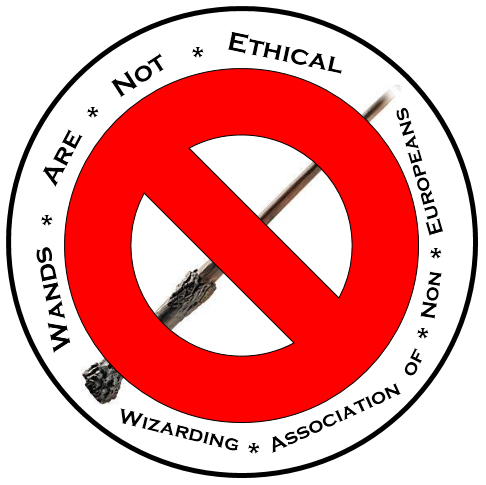Subject: The scourge of magic wands (more crackPottery)
Author:
Posted on: 2016-08-25 09:47:00 UTC
For thousands of years, our European colleagues in the wizarding community have harped on one constant message: magic wands are better. They allow more advanced magic, more easily, with more control. They let witches and wizards who would otherwise be limited to a few minor curses craft elaborate charms and spells. "The wand did for magic what fire did for cooking," as one famous history put it.
All of this is true.
Strangely absent from the discourse coming out of Europe, though, is the terrible cost of wands. Not monetary cost - the cost to the living things whose powers we are stealing to fuel our own.
Does the phoenix feel the energy leave it each time one of its feathers is encased in wood? Does the rare magically-attuned oak or ash realise how it is exploited, when its branches are harvested to fuel human wizardry? How many magical creatures have had their lives lessened, shortened, by the leeching of their power to serve our ends?
It is not the time to turn away from the use of wands; every witch and wizard on the planet sees them as indispensable to 'proper' magic. But can we not be more considerate in their use? Can we not see them for what they are - tools for extracting another creature's power and using it to feed our own? If we can, then perhaps we can set foot on the path towards a new, kinder mode of magic.
-This message brought to you by the Wizarding Association of Non-Europeans (W.A.N.E.)
Consider the following:
-Wands, using animal and plant material, were invented by Europeans, not by the reportedly animal-and-plant-attuned Native Americans.
-According to Ollivander, "Only a minority of trees can produce wand quality wood (just as a minority of humans can produce magic)." There is a direct parallel between magic-using humans and magic-producing trees.
-Wands are quasi-intelligent, able to choose and bond with their owners. Where does the intelligence come from?
-The only instance we see of a creature deliberately giving material for a wand - the Horned Serpent's gift to Isolt Sayre - comes across as a significant and powerful act of almost mystical significance: "...she went down to the creek to find the Horned Serpent, which rose up out of the water and bowed its head to her while she shaved a long shard from its horn."
-According to at least one report, Newt Scamander's wand does not contain normal animal material. Its core appears to be either bone or shell, both of which are only obtainable after the creature is dead (and thus no longer needs its innate powers). Newt, of course, is the wizard we know of who's most in tune with fantastic beasts (other than Hagrid, whose wand has... an unknown core).
I don't think it's a wild extrapolation to think that wands make use of their sources' magic, and that they lessen it somehow by doing so. From that it follows that their creation and introduction to various places at various times was probably highly controversial.
Note that Isolt's introduction of wand-making to the Americas is deftly done: she built it on a foundation of respect for the magical creatures, which apparently continued long after (remember the mystery of obtaining White River Monster spines?). In contrast, European wizards grab shed unicorn hairs and sell them for profit.
Obviously all this is my own extrapolation (and W.A.N.E. is my own creation), but I think it fits. Thoughts from the gallery? I'm happy to be wrong if I'm wrong. ;)
hS
